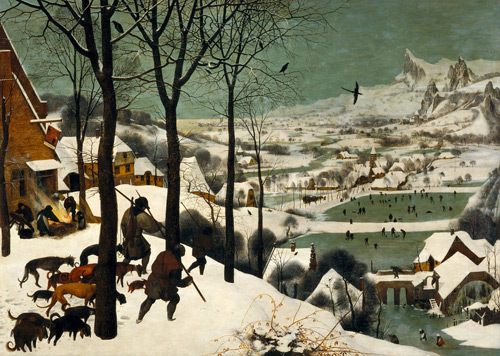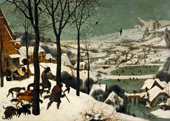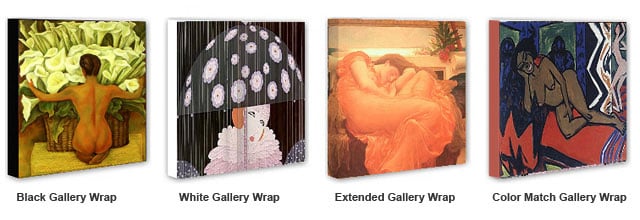The Hunters in the Snow Winter By Pieter The Elder Bruegel
The Hunters in the Snow by Pieter Bruegel is an iconic work of the Northern Renaissance painted in 1565. The painting forms part of a larger decorative scheme for an opulent mansion for Nicolaes Jonghelinck.
What is the Significance of Hunters in the Snow?
Five Pieter Bruegel the Elder oil paintings form a series depicting different seasons throughout the year. This particular artwork depicts the coldest months of winter. Consequently, hunters return with their dogs after a possibly unsuccessful hunt. One man carries a fox corpse, while an escaped hare or rabbit's footprints are visible in the snow. The scene forms part of the European “Labors of the Months” tradition, referring to cycles of Medieval and Renaissance art depicting rural activities throughout the year.
Indeed, Bruegel’s series contains twelve independent artworks. Unfortunately, only the following paintings survive:
- The Gloomy Day- February to March
- The Hay Harvest -June to July
- The Harvesters -August to September
- The Corn Harvest - August
- The Return of the Herd - October to November.
In terms of meaning, "Labors” famous paintings often link to signs of the zodiac, fate, and astrology. Oil painting reproductions by Pieter Bruegel and The Elder are no exception and are deeply symbolic religious paintings. Accordingly, they often represent humanity’s often futile efforts in a deeply ordered, God-created world. Amidst our secular lives and concerns, only faith in God and the natural divine order could bring ultimate comfort, and the Christian and allegorical meanings of “Labors of the Months” paintings are deeply significant in the evolution of famous landscape paintings.
Where is Pieter Bruegel's Famous Renaissance Painting?
Pieter Bruegel’s painting shows a classic wintry view of the Netherlandish countryside, with three hunters trudging across an intricately detailed snowy landscape. While the exact location is unknown and likely entirely imaginary, the level of detail is extraordinary. Indeed, the jagged mountain peaks in the distance do not exist in either Holland or Belgium. Aside from the peak, the painting presents a flat-bottomed valley, a relatively common geographic formation. The branches are dusted with a fine layer of snow while the figures in the distance play with sleds and spinning tops. Despite the cold, men extinguish a chimney fire while others shoot birds. A village church steeple is also just visible in the far distance. Giving a foreboding atmosphere to the painting, crows sit on barren branches. In northern European art, crows were an ill-omen for the winter months ahead. Indeed, in Dutch culture, magpies and crows were commonly linked with the devil and back luck.
The trees on the left-hand side of the canvas frame the image, while the hunters’ path down the valley easily leads the viewer's eye across the painting. Overall, the colors provide an extremely muted, cold impression. Whites and grays predominate the scheme, while the trees are bare of leaves, and smoke looms in the air.
Today, Bruegel's famous painting, The Hunters in the Snow, hangs in the permanent collection of the Kunsthistorisches Museum in Vienna, Austria.
How did Pieter Bruegel impact Renaissance Artworks?
Pieter Bruegel the Elder art is some of the finest examples of famous Renaissance paintings. Secular themes take priority in paintings such as Hunters in the Snow and Pieter Bruegel the Elder Netherlandish Proverbs 1559. His highly detailed paintings celebrate everyday life, contrasting with traditional and stylized Religious wall art. Bruegel's painting significantly shifts away from popular Italian Renaissance styles, which previously focused on saints and Biblical narratives. Bruegel’s art is the foundation of the Northern European artistic style, particularly Vermeer paintings, Peter Paul Rubens Baroque Art, and Rembrandt famous paintings. Additionally, Bruegel ensured Northern European art evolved in its distinctive direction by pursuing his unique approach.
The 1560s witnessed an extreme religious revolution in the Netherlands, providing additional significance to the work. In addition, the protestant reformation swept through Northern Europe, bringing substantial changes to everyday life. Bruegel’s landscape oil painting does not reference traditional Religious Art. However, it does link with nature and an ideal of country life with its rapid societal and cultural changes.
Art reproductions of Netherlandish Proverbs and Hunters in the Snow by Pieter Bruegel, the Elder, are available online from our museum quality art collection.
We offer a 100% money back guarantee or replacement service. If for any reason you are dissatisfied with your painting please contact us within 7 days of receipt, advising the reason you are unhappy and we will provide you with all the information you need for its return or replacement.
We ship free to anywhere in the world via FedEx or DHL expedited service with online tracking.
Your painting will be shipped rolled in strong plastic tubing, ready for stretching and/or framing locally. This is the conventional method of transporting hand-painted oil on canvas. Learn more about how your painting is shipped.
We are able to offer a framing service intercontinental U.S. Please contact us if you would like a quotation. Alternatively, should you prefer, we can recommend a framer in your area.
Notes About Your Painting
Please note that replica oil paintings are finished with an additional 10cm (4") of extra canvas on all sides, allowing ample surplus canvas for stretching and framing.
Recently Viewed:
Cannot Find What You Are Looking For?
Reproduction Gallery Information
Customer Service
(Send Us A Message)
Tel: (503) 937 2010
Fax: (503) 937 2011







